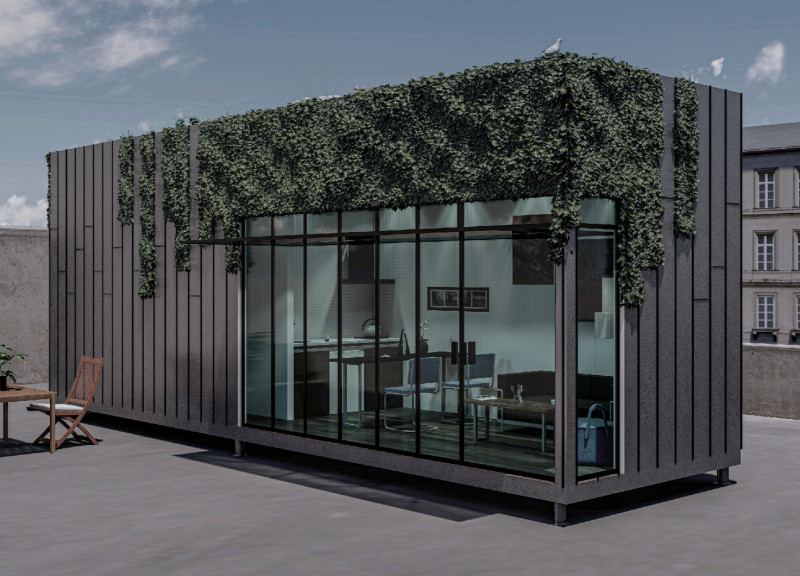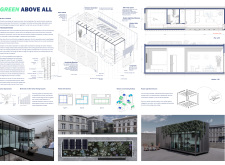5 key facts about this project
The design situates itself in a busy urban area, aiming to address two pressing issues: the lack of housing and the challenges of environmental sustainability. The concept revolves around modularity, allowing for structures that can be easily assembled, disassembled, and adapted to meet the needs of various urban contexts. The focus is on creating efficient living spaces that integrate green features, ultimately fostering a more sustainable urban habitat.
Material Selection
Zinc cladding serves as a primary material for the project due to its durability and low maintenance requirements. When exposed to moisture and carbon dioxide, the zinc develops a patina that enhances its longevity. The design also includes solar panels combined with green roofs, which support better energy performance. The cooling effect of plants improves the efficiency of solar cells, underlining the building's commitment to ecological integration.
Modular Structure
The modular structure is a key characteristic of the design, allowing for straightforward assembly and adaptation to different settings. Each unit can be transported easily, fitting into standard trailers when disassembled. This feature not only simplifies logistics but also reduces the carbon footprint associated with construction and transportation.
Biodiversity Integration
The project takes a proactive approach to biodiversity by incorporating various plant species that create habitats for urban wildlife. Selected grasses and herbaceous plants contribute to enhanced carbon sequestration, which helps reduce greenhouse gases in the air. This strategy supports local ecosystems and encourages more wildlife to thrive within urban areas, ultimately benefiting the environment.
The design incorporates a structural system that adheres to “Passive House Standards," emphasizing energy efficiency and minimal ecological impact. Each module’s framework allows natural elements and living spaces to coexist. Indoor environments benefit from the presence of greenery, facilitating a closer relationship between residents and nature, and leading to a more balanced urban living.



















































